Published on 8 Sep 2024 | Last updated on 10 Sep 2024
The Secret to a Smooth Recovery: Why Compression Garments Are Essential After Plastic Surgery
- ByMedical Content Team
- Medically Reviewed byDr. Sabine Kulhanek
Fact checked
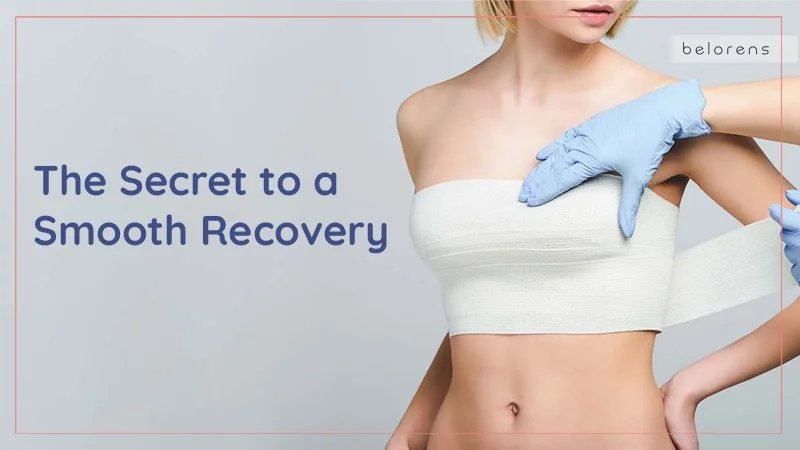
Plastic surgery involves a significant investment in one's appearance and well-being. Achieving the desired results is not solely dependent on the surgical procedure itself but also on the crucial post-operative care that follows. One of the most essential components of this care is the use of compression garments.
Compression garments play a vital role in the healing process by reducing swelling and bruising, improving blood circulation, supporting the surgical site, and helping to shape and contour the body. In this blog post, we will explore the importance of compression after plastic surgery, highlighting how these garments contribute to a smoother, more comfortable recovery and better overall results. Whether you are considering plastic surgery or are already on the path to recovery, understanding the role of compression after plastic surgery can help you make informed decisions and enhance your post-operative experience.
What is a compression garment?
A compression garment is a specially designed piece of clothing that applies controlled pressure to specific areas of the body. These garments are often made from elastic and stretchy fabrics such as nylon, spandex, and Lycra, which allow them to fit snugly and provide consistent compression. They come in various forms, including vests, girdles, sleeves, and socks, each tailored to different parts of the body and types of surgeries.
Many garments come with adjustable features to ensure a secure fit and accommodate changes in swelling. They are typically made from breathable and moisture-wicking fabrics, which are designed to keep the skin dry and comfortable, preventing irritation. These features are essential to ensure comfort and promote healing during the recovery process.
Types of compression garments
Compression garments come in various forms, each tailored to specific parts of the body and types of surgical procedures. Here’s an overview of the different types of compression garments commonly used after plastic surgery:
Abdominal binders and girdles
Abdominal binders and girdles are used after procedures like tummy tucks (abdominoplasty), liposuction, and other abdominal surgeries. They provide support to the abdominal area, reduce swelling, and aid in shaping and contouring the midsection.
These wide bands or girdle-like garments wrap around the midsection, often adjustable with Velcro or hook-and-eye closures.
Bras and vests
Surgical bras and vests are commonly used after breast surgeries such as augmentation, reduction, reconstruction, mastopexy, and mastectomy. These soft, elastic bras or vests come with wide straps and front closures for easy wear and adjustment.
Surgical bras and vests support the breasts, reduce swelling, minimize movement, and help maintain the new shape and position of the breasts.
Facial garments
Facial compression garments include headbands, chin straps, or full facial masks. They are used after facelifts, neck lifts, chin liposuction, and other facial procedures to help minimize swelling, support delicate facial tissues, and maintain the new contours of the face.
Arm and leg sleeves and stockings
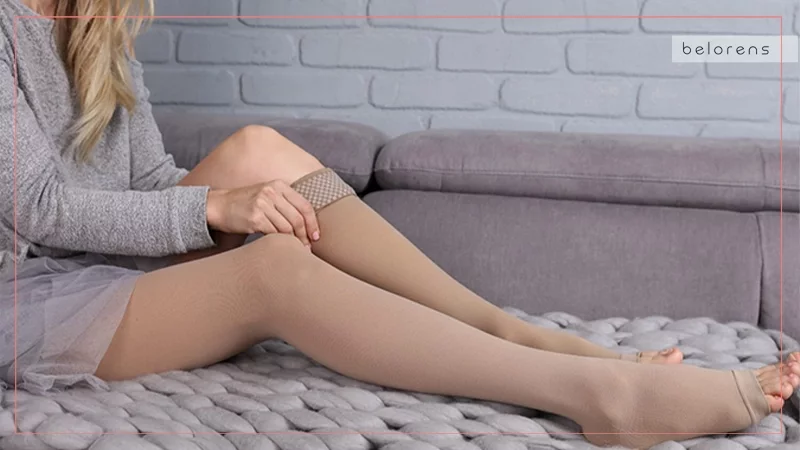
Arm and leg sleeves are utilized after liposuction or other surgeries on the limbs, such as brachioplasty (arm lift) or thigh lift. They are tight-fitting sleeves or leggings that cover the arms or legs, often with open-toe designs for comfort. Knee-high compression stockings are similar to leg sleeves but cover the ankles and feet as well, providing uniform pressure along the calf and lower leg.
These special post-operative compression garments are used to reduce swelling, support the healing process, and improve blood circulation in the arms or legs.
Full-body suits
Full-body compression suits are ideal for extensive procedures involving multiple body areas, such as full-body liposuction or mommy makeovers. They cover the torso, arms, and legs, and come with zippers or hook-and-eye closures for easy application.
Full-body suits provide comprehensive support and compression across the entire body, ensuring uniform pressure and aiding in overall healing.
Shorts and pants
Compression shorts and pants are used after lower body surgeries, such as thigh lifts, buttock augmentations, or liposuction. These high-waisted shorts or pants provide compression to the hips, thighs, and buttocks to help reduce swelling, support the tissues, and aid in shaping the lower body.
Why should I wear a compression garment after plastic surgery?
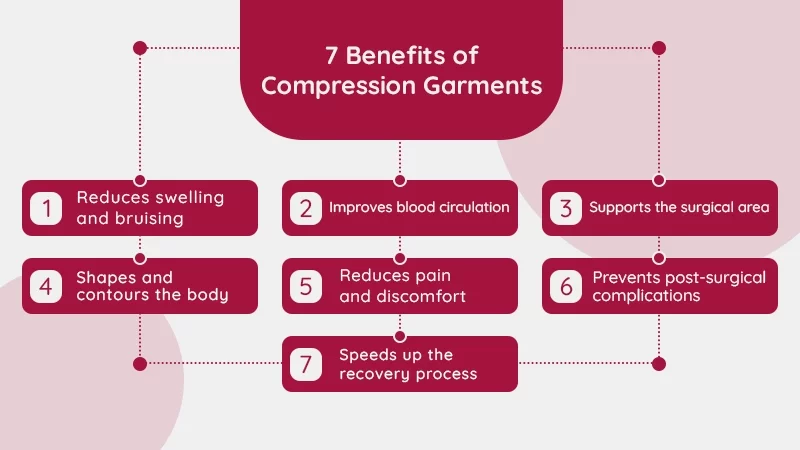
Wearing compression garments after plastic surgery is crucial for several reasons, all of which contribute to a smoother recovery and optimal surgical outcomes. Here are the key benefits and reasons for wearing a compression garment post-surgery:
1. Reduces swelling and bruising
After surgery, the body’s natural response is to produce swelling and bruising around the operated area. Compression garments help minimize these effects by applying consistent pressure, which prevents excessive fluid buildup in the tissues. This pressure facilitates the body's lymphatic drainage system, speeding up the reduction of swelling and bruising.
2. Improves blood circulation
Enhanced blood flow is vital for healing. Compression garments promote better circulation in the surgical area, ensuring that oxygen and essential nutrients are efficiently delivered to the tissues. Improved circulation also helps prevent blood clots, a potential post-surgical complication.
3. Supports the surgical area
The operated area often needs extra support to maintain the new contours and positions. Compression garments provide this support, helping to stabilize and protect the surgical site. This support minimizes movement that could disrupt the healing process and lead to complications.
4. Shapes and contours the body
One of the goals of plastic surgery is to achieve a certain body contour. Compression garments help the skin and underlying tissues adhere properly to the new contours created during surgery. They assist in molding the body into its desired shape, ensuring that the results are as close to the surgical plan as possible.
5. Reduces pain and discomfort
The consistent pressure applied by compression garments can significantly alleviate post-surgical pain and discomfort. By reducing swelling and supporting the tissues, these garments help patients feel more comfortable and mobile during their recovery.
6. Prevents post-surgical complications
Wearing compression garments can help reduce the risk of several post-surgical complications, such as hematomas (collections of blood outside of blood vessels), seromas (pockets of clear fluid), and infections. By keeping the surgical area clean, stable, and compressed, the garments create an environment conducive to healing.
7. Speeds up the recovery process
By reducing swelling, improving circulation, and providing necessary support, compression garments help speed up the overall recovery process. Patients can return to their normal activities sooner and enjoy the benefits of their surgery more quickly.
Also Read: 5 Tips to Maintain Liposuction Results for Long
How long should I wear a compression garment?
The duration for wearing a compression garment after surgery varies based on the type of surgery, the specific garment, and individual healing needs. Here are timelines and general guidelines for wearing surgery support garments after some common procedures:
Abdominoplasty (Tummy Tuck)
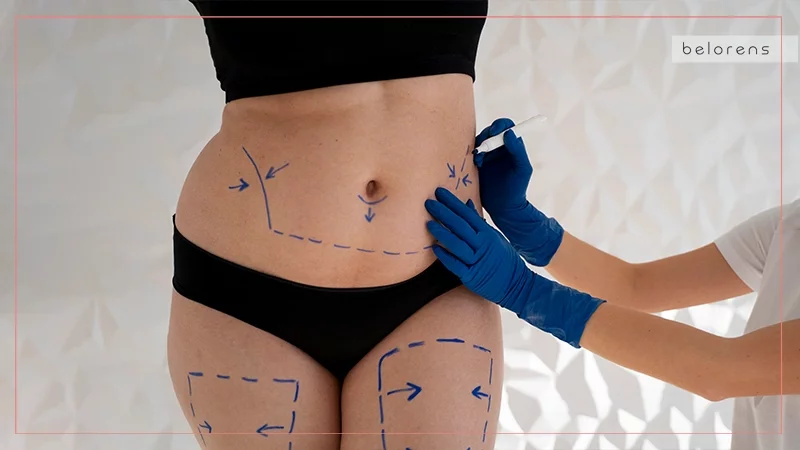
Wearing a compression garment after an abdominoplasty (tummy tuck) is crucial for optimizing your recovery and achieving the best results.
- First 1-2 weeks: Wear the garment continuously (24/7) except when showering. This helps reduce swelling, support the abdominal muscles, and improve contouring.
- Weeks 3-6: Gradually transition to wearing the garment for 12-18 hours a day, depending on your surgeon’s advice.
- Beyond 6 weeks: Depending on individual healing, some may need to continue wearing it part-time, especially during physical activities or as recommended by the surgeon.
Liposuction
Wearing a compression garment after liposuction is a critical part of the postoperative care process. It supports the treated areas, reduces swelling, and helps achieve the best possible results. They also help reduce post-liposuction lumps and bumps by promoting even healing, reducing swelling, preventing fluid accumulation, enhancing blood flow, and supporting tissue adhesion
- First 1-2 weeks: Continuous wear (24/7) is crucial to reduce swelling and help the skin conform to the new contours.
- Weeks 3-4: Wear the garment for about 12-18 hours a day. This continued compression supports ongoing healing and contouring.
- Weeks 4-6 and beyond: Some patients may need to wear the garment part-time (such as during the day) for an additional few weeks based on their surgeon’s advice and personal healing.
Breast augmentation, reduction, or lift
Wearing a surgical bra after any cosmetic breast surgery such as breast implants, breast reduction, or breast lift is not just recommended but is considered essential for a successful recovery. It plays a vital role in reducing swelling, supporting healing, improving comfort, promoting circulation, preventing complications, and maintaining the surgical results.
- First 1-2 weeks: Continuous wear (24/7) of a post-surgical bra to minimize swelling and provide support.
- Weeks 3-4: Wear the garment during the day and night, but some flexibility may be allowed based on the surgeon’s recommendations.
- Weeks 4-6 and beyond: Gradual reduction in wear time as healing progresses, but many surgeons recommend continuing use during the night for additional weeks.
Body lift
Given the extensive nature of a body lift procedure, wearing compression garments post-operatively is crucial for supporting the healing process, minimizing complications, and achieving optimal results.
- First 1-2 weeks: Continuous wear (24/7) is essential to reduce swelling and support the extensive areas involved.
- Weeks 3-6: Gradual reduction in wear time to about 12-18 hours a day as advised by the surgeon.
- Beyond 6 weeks: Continued part-time wear may be necessary based on individual healing progress and surgeon recommendations.
Brazilian butt lift (BBL)
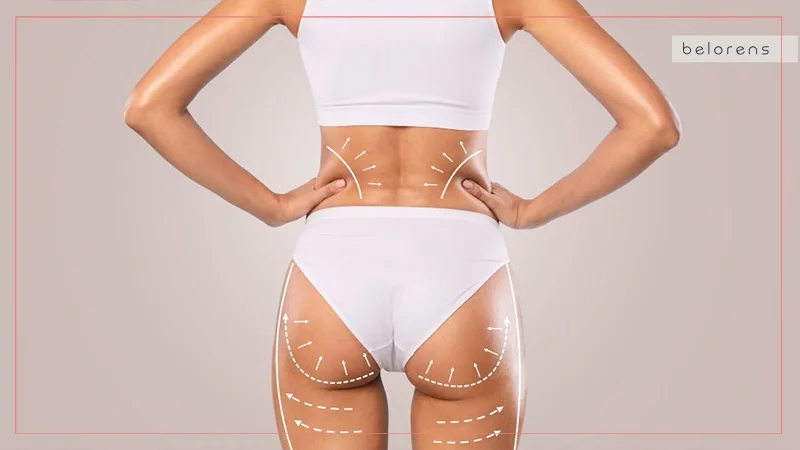
Wearing compression garments after a Brazilian butt lift (BBL) is essential for promoting effective recovery and attaining the best possible outcomes.
- First 2-3 weeks: Continuous wear (24/7) of a special compression garment designed to support the buttocks while avoiding direct pressure on the newly transferred fat cells.
- Weeks 4-6: Wear the garment for about 12-18 hours a day. Avoid sitting directly on your buttocks and use a special cushion if necessary.
- Beyond 6 weeks: Gradual reduction in wear time as healing progresses, but continue to avoid prolonged direct pressure on the buttocks. Follow your surgeon’s specific recommendations regarding when to resume normal sitting.
Brachioplasty (arm lift)
After undergoing an arm lift or brachioplasty, the use of a compression garment is a critical component of the recovery regimen. This garment provides necessary support to the operated areas, significantly diminishes swelling, and plays a vital role in ensuring optimal healing and final aesthetic outcomes.
- First 1-2 weeks: Continuous wear (24/7) to minimize swelling and support the arms.
- Weeks 3-4: Gradual reduction to wearing the garment for 12-18 hours a day.
- Weeks 4-6 and beyond: Part-time wear, especially during the day, until the surgeon advises otherwise.
Facelift or neck lift
Wearing a compression garment after a facelift or neck lift is an essential part of the postoperative care process. It supports the delicate facial and neck tissues, reduces swelling, and helps achieve the best possible results.
-
First 1-2 weeks: Wear the facial compression garment continuously (24/7) except when showering. This helps reduce swelling and support delicate facial tissues.
- Weeks 3-4: Wear the garment primarily during the day or as recommended by the surgeon.
- Weeks 4-6 and beyond: Continue to wear the garment part-time, especially at night, as advised by your surgeon.
Rhinoplasty (nose surgery)
Wearing a traditional compression garment is not common after rhinoplasty (nose surgery). Instead, what is typically used are nasal splints and sometimes external taping to support the nose during the initial healing period.
- First 1-2 Weeks: While not always required, if a compression garment is recommended (such as a nasal splint), it should be worn continuously as directed by your surgeon.
- Weeks 3-4: Follow your surgeon’s specific instructions, which may involve part-time wear or transitioning to less restrictive support.
Choosing the right compression garment
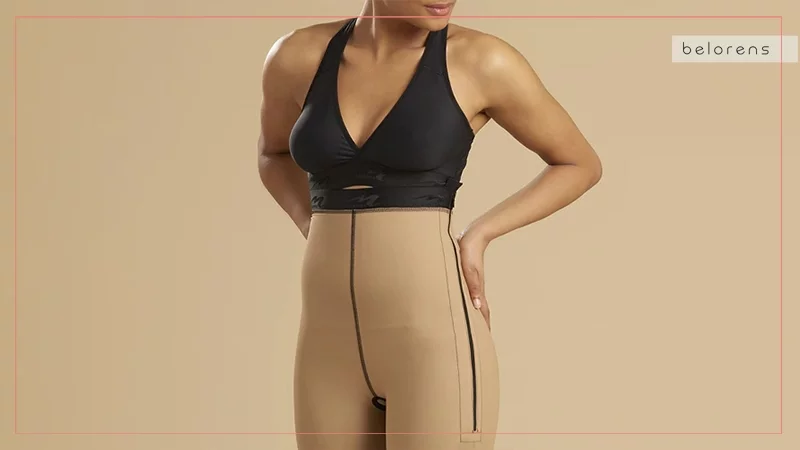
Choosing the right compression garment is vital for ensuring a smooth recovery and achieving the desired results after surgery. The garment should fit snugly but not too tight, providing uniform compression without restricting circulation. Accurate sizing based on your body measurements is essential, and consulting your surgeon can help if you're unsure.
Select a garment designed specifically for your type of surgery, ensuring it provides full coverage to all operated areas. Opt for breathable, moisture-wicking materials like cotton blends or medical-grade elastics to prevent skin irritation and enhance comfort. A seamless design can also reduce friction and irritation on incision sites.
Look for adjustable straps or closures to ensure a proper fit as swelling decreases, and choose a garment that's easy to put on and take off. Ensure the garment is made from durable, high-quality materials with good stitching to withstand frequent use and washing.
For hygiene and care, select a garment that is easy to wash and quick to dry. Having two garments can be beneficial, so you always have one to wear while the other is being cleaned. Some garments with antibacterial properties can help reduce the risk of infection and odor.
Does wearing compression garments have side effects?
Wearing compression garments can have side effects, although they are generally rare and manageable. Potential issues include skin irritation, such as chafing, rashes, or allergic reactions to the materials. Discomfort from tightness and increased heat and sweating can also occur. If the garment is too tight, it might restrict blood flow, causing numbness or pressure sores. Hygiene concerns are important; if the garment is not kept clean, it can lead to infections and unpleasant odors. Some individuals may experience psychological discomfort or anxiety due to the constant pressure.
To mitigate these side effects, ensure the garment fits properly, choose breathable and hypoallergenic materials, and maintain good hygiene by regularly washing the garment. Follow your surgeon's advice on how long to wear the garment and when to take breaks. Regularly check your skin for signs of irritation or pressure sores, and address any issues promptly. Compression garments are generally safe and beneficial for post-surgical recovery when used correctly. Always consult your surgeon for personalized advice and follow their recommendations closely.




